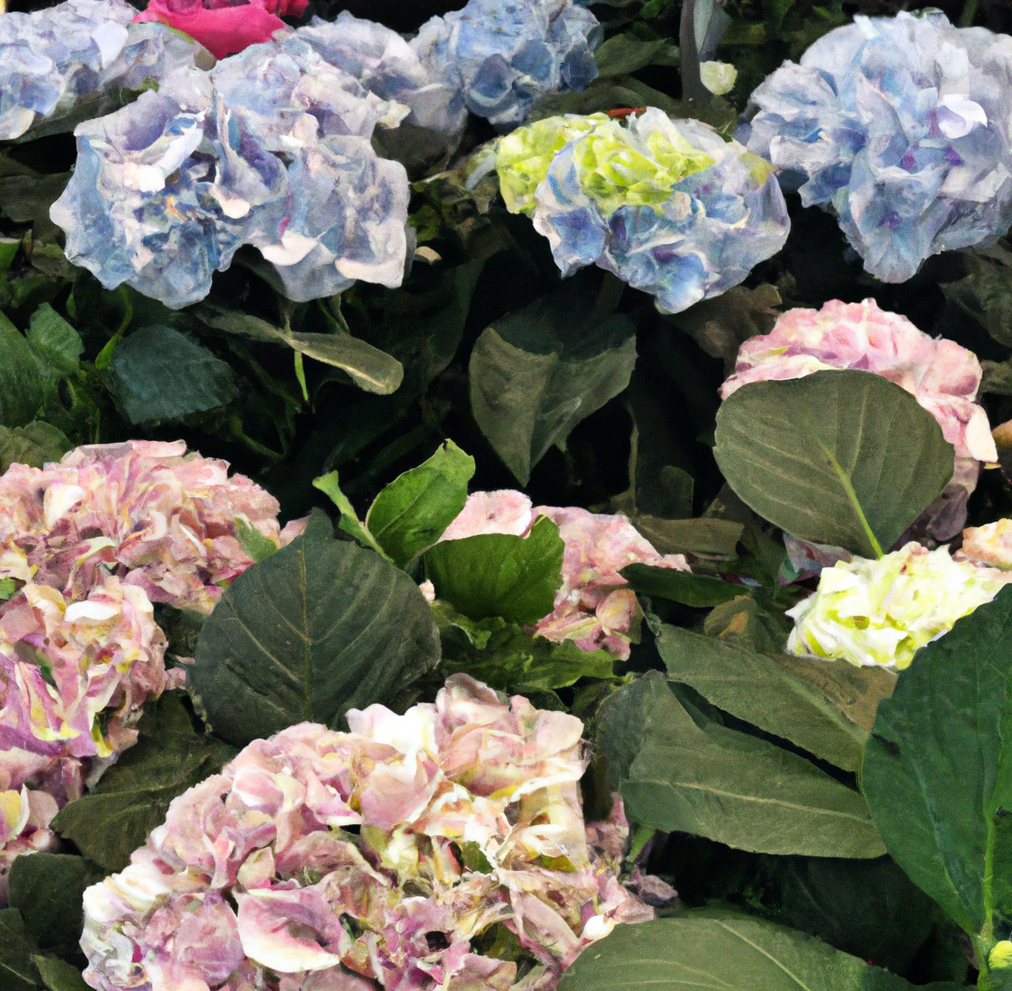Unlock the secrets of propagating hydrangeas with our comprehensive guide! Whether you want to expand your hydrangea collection or share their beauty with others, learning how to propagate hydrangea plants is the key. In this article, we'll explore different methods and provide you with step-by-step instructions for successful propagation. Get ready to dive into the world of hydrangea propagation and don't forget to check out Rosy Soil's potting soil for optimal plant growth!
Hydrangeas are beloved flowering shrubs known for their stunning blooms and lush foliage. With a wide range of colors and varieties, they add a touch of elegance to any garden or landscape. By propagating hydrangeas, you can create new plants that maintain the unique characteristics of the parent plant. Let's get started!
Propagation by Softwood Cuttings
Softwood cuttings are a popular and effective method for propagating hydrangeas. Follow these steps:
-
Select a healthy stem from the current season's growth, ensuring it is flexible and not woody.
-
Using clean, sharp pruners, take a 4-6 inch cutting from the tip of the stem, just below a leaf node.
-
Remove any lower leaves, leaving only a few leaves at the top.
-
Dip the cut end in a rooting hormone to promote root development (optional but recommended).
-
Plant the cutting in a container filled with well-draining potting soil, such as Rosy Soil's eco-friendly potting soil.
-
Place the container in a warm, bright location with indirect sunlight.
-
Keep the soil consistently moist, but avoid overwatering.
-
After a few weeks, gently tug on the cutting to check for root growth. Once roots have formed, the new hydrangea plant can be transplanted to its permanent location.
Pros:
- Relatively easy and reliable method
- Allows for the creation of multiple new hydrangea plants
- Results in plants that maintain the characteristics of the parent plant
Cons:
- Requires some patience and care during the rooting process
Propagation by Layering
- Select a low-growing branch that is flexible and still attached to the parent plant.
- Gently wound the selected branch by removing a small section of the outer bark.
- Apply a rooting hormone to the wounded area (optional but recommended).
- Dig a shallow trench near the wounded area and bury it in the trench, leaving the wounded section exposed.
- Secure the buried section with a U-shaped pin or a small rock.
- Cover the buried section with soil, leaving the wounded area exposed.
- Water the area regularly to keep the soil moist.
- After a few months, check for root development by gently tugging on the buried section. Once roots have formed, detach the new hydrangea plant from the parent plant and transplant it to its desired location.
Pros:
- Allows for the propagation of mature hydrangea plants
- Produces well-established plants with a higher chance of success
- Requires less maintenance compared to other methods
Cons:
- Takes longer for the new plant to be fully established
Propagation by Division
- Dig up the mature hydrangea plant, taking care to disturb the roots as little as possible.
- Gently separate the plant into smaller sections, ensuring each section has its own stems and root system.
- Plant each divided section in a separate hole filled with well-draining potting soil, like Rosy Soil's sustainable potting soil.
- Water the newly planted sections thoroughly.
- Provide regular watering and care to ensure their successful establishment.
Pros:
- Allows for the creation of multiple new hydrangea plants
- Maintains the characteristics of the parent plant
- Results in well-established plants with a higher chance of success
Cons:
- Requires a mature hydrangea plant with multiple stems
Propagation by Seed (Advanced Method)
- Collect ripe hydrangea seeds from a mature plant or purchase them from a reputable source.
- Sow the seeds in a container filled with well-draining potting soil, lightly pressing them into the surface.
- Cover the container with a clear plastic lid or plastic wrap to create a greenhouse-like environment.
- Place the container in a warm location with indirect sunlight.
- Keep the soil consistently moist but not waterlogged.
- Be patient, as hydrangea seeds can take several weeks to months to germinate.
- Once the seedlings have grown, transplant them into individual pots and continue to care for them until they are ready to be planted outdoors.
Pros:
- Offers the opportunity to grow hydrangeas from scratch
- Allows for experimentation and discovering unique plant variations
Cons:
- Requires advanced gardening skills and patience
- Results may vary in terms of plant characteristics
Master the Art of Hydrangea Propagation with Rosy Soil!
Now that you have learned the different methods of propagating hydrangeas, it's time to put your knowledge into practice. Remember to provide your newly propagated plants with optimal growing conditions, including a well-draining potting soil like Rosy Soil's potting soil. With its nutrient-rich formula and excellent drainage properties, Rosy Soil will help your hydrangeas thrive and produce beautiful blooms.
Expand your hydrangea collection, create stunning garden displays, and enjoy the satisfaction of propagating these magnificent flowering shrubs. Happy propagating with Rosy Soil!





